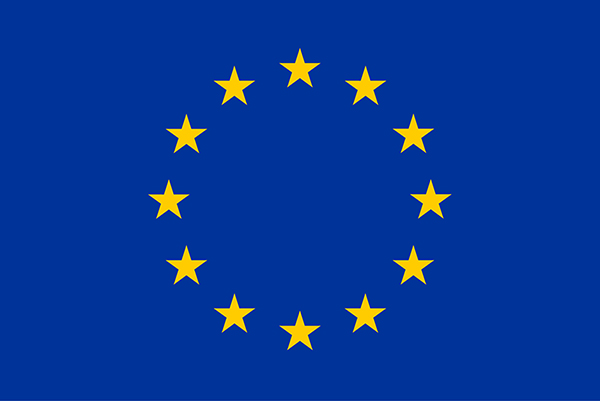Project Goals
FOOD-RULES has the following goals.
Goal 1a. Define a comprehensive measurement methodology and experiment in kitchens and preparation centers. More specifically, the methodology foresees three types of measurements:
- Measurements about food refuse generated during preparation. Measurements related to preparation is assessed using volumetric estimation of the waste generated. Kitchen have different bins, one per category we intend to monitor (e.g., meat, vegetables, other). The number of bins filled will then be transformed into a weight (estimation) using density information. Volumetric measurement, although a bit rough on the edges, is low-overhead and economic. Other approaches, based on weighting bins or adopting commercial solutions fail on the first (low-overhead) or second (economic) requirement. Data is collected in BringTheFood; the system allows to upload also pictures. Interviews with personnel will then determine whether the measurements will be systematic or performed only for specific periods of time.
- Measurements about surpluses of prepared food. On top of data BringTheFood already collects (food donations by dish), we will measure the quantity of unsold food which cannot be donated (e.g, errors during preparation or food which does not respect the guidelines for good donations set by the Italian Food Banks) and waste left on plate, organized by type of dish (first course, main course, other). Waste on plate is measured by asking customers to empty their dishes in different bins (one for each of the category donations are usually reported: first course, main course, fruit and desserts). Waste on plate, in fact, represents a missed opportunity to donate food. Notice also that this data collection activity contributes also to the achievement of goal 1c and 1b, since it helps raise awareness on consumers about food waste.
- Additional information to correlate data. We also intend to add measures of other factors which might influence the amount of waste generated. More in details, we intend to measure: data about the number of people served, their satisfaction (votes on a Likert scale); we will also measure satisfaction of beneficiaries, that is, receivers of food donations. This is novel, to our knowledge, move in the direction in increasing the quality of the food donations, and open up the possibility of new analyses (e.g., comparison with paying customers; decrease of food quality, if any). This adds on top of data already available on the quantities of food entering the kitchen.
Goal 1b. Increase reach of food donation by experimenting with delegated delivery and pickup. In FOOD-RULES, we intend to increase the quantity of food recovered and redistributed from canteens by involving customers and beneficiaries in delivery and collection. Customers will be invited to volunteer to deliver food donations from the canteen they eat to a given collection point; beneficiaries will be asked to reserve food among the surpluses available and invited to collect it autonomously (when possible). Activities might be regular or occasional, according to interest. Incentives to customers and beneficiaries (e.g., a free coffee) might be experimented. One possible outcome is finding new regular volunteers for the Food Bank. Publicity in canteens and awareness raising activities will help raise volunteers. Training and guidelines will guarantee safety measures are met. Logistics might be simplified (fewer Kms by car). BringTheFood will provide the data-collection and organizational machinery. Notice that most of the functions (data collection, reservations, organization of deliveries and pickups) are already in place. Specific implementation activities are foreseen in FOOD-RULES to introduce ratings, open up the application to “occasional” volunteers, and perform the necessary configurations.
Goal 1c. Reduce waste on plate. Various studies highlight the importance of data measurement programs, awareness raising campaigns, and promoting active engagement to change behaviors, in customers and operators alike, and reduce food waste. For this reason the project foresees dissemination and training actions targeting customers, some of which are University students, with the overall goal of reducing waste on plate. On top of webinars, conferences, course about cooking with leftovers, we will involve students of Computer Science, Sociology, and Economics in specific “challenges”, which will be part of the newly introduced “challenge-based” learning curricula of the University of Trento, according to which some subjects require students to apply what they learn to solve specific challenges proposed at the start of the subject. The topics we target are: “Machine Learning for Waste Stream Assessment”, “Food Surplus Awareness and Food Donations”, and “Improving efficiency of Canteen Operations and Food Donations”. We secured the interest of some professors. Challenges serve the purpose of raising awareness; results from students are not in the critical path: they are a welcome addition rather than a project need. See the dissemination section for more details about events.
Goals 2a and 2b. Onboard other operators in adopting the waste measurement methodologies implemented in FOOD-RULES. This goal will be achieved through dissemination activities aimed at operators performed via LinkedIn, webinars, blog posts and other materials on the web. The activity might be eased by the fact the various other Italian operators are already on the platform; it is also clearly in the interest of ST to enlarge its user base. The functions will be free of charge for the duration of the project; agreements will then be set with users to decide on a subscription fee.
